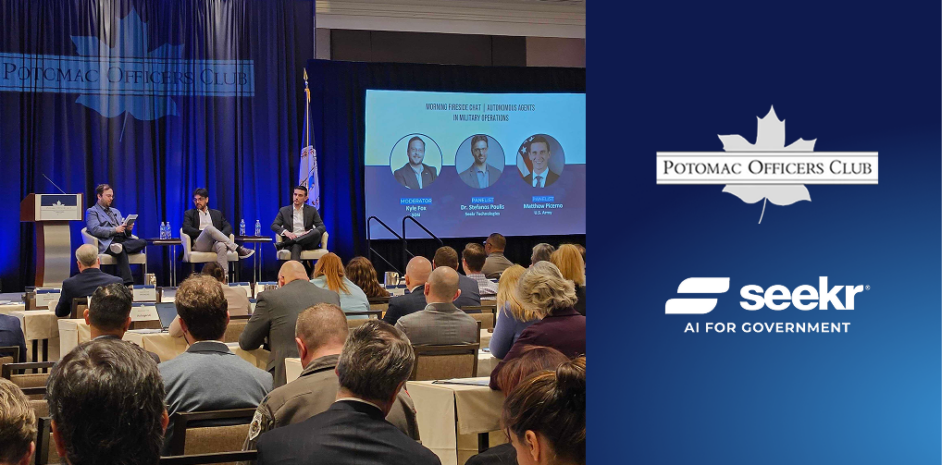The Future of AI in Defense: 5 Takeaways from the Potomac Officers Club’s AI Summit
March 20, 2025
The Potomac Officers Club’s recent AI Summit for DoD and national security leaders brought together government thought leaders to discuss the fast-moving advancements in artificial intelligence and its impact on national security, defense, and operational strategies. The event highlighted the urgent need to integrate AI into critical operations while addressing trust, transparency, security, and implementation challenges. Here are the top five key takeaways from the event:
1. AI is transforming modern warfare
The conflict in Ukraine has demonstrated how AI and advanced surveillance technologies are changing the dynamics of warfare. AI-powered reconnaissance, targeting, and drone warfare have accelerated the shift in combat strategies, leading to a resurgence of trench warfare. AI-enabled battlefield intelligence is becoming a decisive factor in modern conflicts. The ability to track and engage enemy positions with precision presents strategic benefits and tactical challenges, particularly where AI-driven logistics impact warfighter readiness, and where predictive analytics deliver a decision advantage.

Seekr’s Chief Technology and AI Officer, Stefanos Poulis, joined a panel to discuss how agentic AI is transforming military operations.
2. Operationalizing AI and preparing data remain a challenge
Despite rapid advancements, deploying AI in real-world operations is still complex. The military and defense sectors are exploring AI applications in mission planning, target recognition, and surveillance, but the pace of implementation lags behind the speed of innovation. Agencies must move beyond AI experimentation by crystallizing their data strategy to ensure their data is scalable, verifiable, and AI-ready. Seekr’s AI-Ready Data Engine automates data preparation and labeling using agentic AI, increasing model accuracy by 3x and model relevance by 6x.
Cut data prep time. Build trusted models faster.
Learn How3. Trust and explainability are everything when it comes to autonomous AI
Trustworthy AI requires transparency, explainability, and adherence to ethical and legal frameworks, particularly in critical operations like defense and national security. AI systems must operate within well-defined guardrails, learning and adapting to evolving rules while remaining accountable. Human oversight remains essential, ensuring that AI acts as a force multiplier rather than replacing human decision-making. Configurable autonomy, explainability, and risk-aware deployment are key to maintaining trust in AI, particularly as adversarial threats grow more sophisticated. The integration of AI must prioritize both security and mission effectiveness, striking a balance between automation and human judgment. See how Seekr delivers trustworthy AI for defense missions:
4. Security and testing of AI models is critical
As AI models grow in complexity, ensuring their security and reliability is paramount. Larger models with billions of parameters present significant testing challenges, making it difficult to guarantee accuracy, security, and robustness. They must also consider cost-effective, highly targeted Small Language Models for specific use case outcomes and missions. And the defense sector must prioritize rigorous validation processes, anti-jamming techniques, and adversarial testing to safeguard AI deployments against potential threats and vulnerabilities.
5. From requirements to outcomes: A shift in AI strategy
One of the biggest mindset shifts was the transition from a requirements-driven approach to an outcomes-driven strategy. Instead of focusing solely on software specifications, defense organizations should align AI implementation with mission objectives and force structure needs. By prioritizing mission outcomes over traditional procurement requirements, AI can be deployed to address real-world challenges rather than monolithic catch-all programs.
Conclusion
The Potomac Officers Club’s AI Summit underscored the rapid pace of AI development and the pressing need to operationalize its capabilities in defense and beyond. From modernizing warfare tactics to solving humanitarian challenges, AI’s role is expanding rapidly. However, overcoming security, operational and transparency hurdles remain crucial to unlocking AI’s full potential for defense and national security missions. Organizations that align AI adoption with mission-driven outcomes rather than requirements, can lead in this new era of AI-powered military operations.



